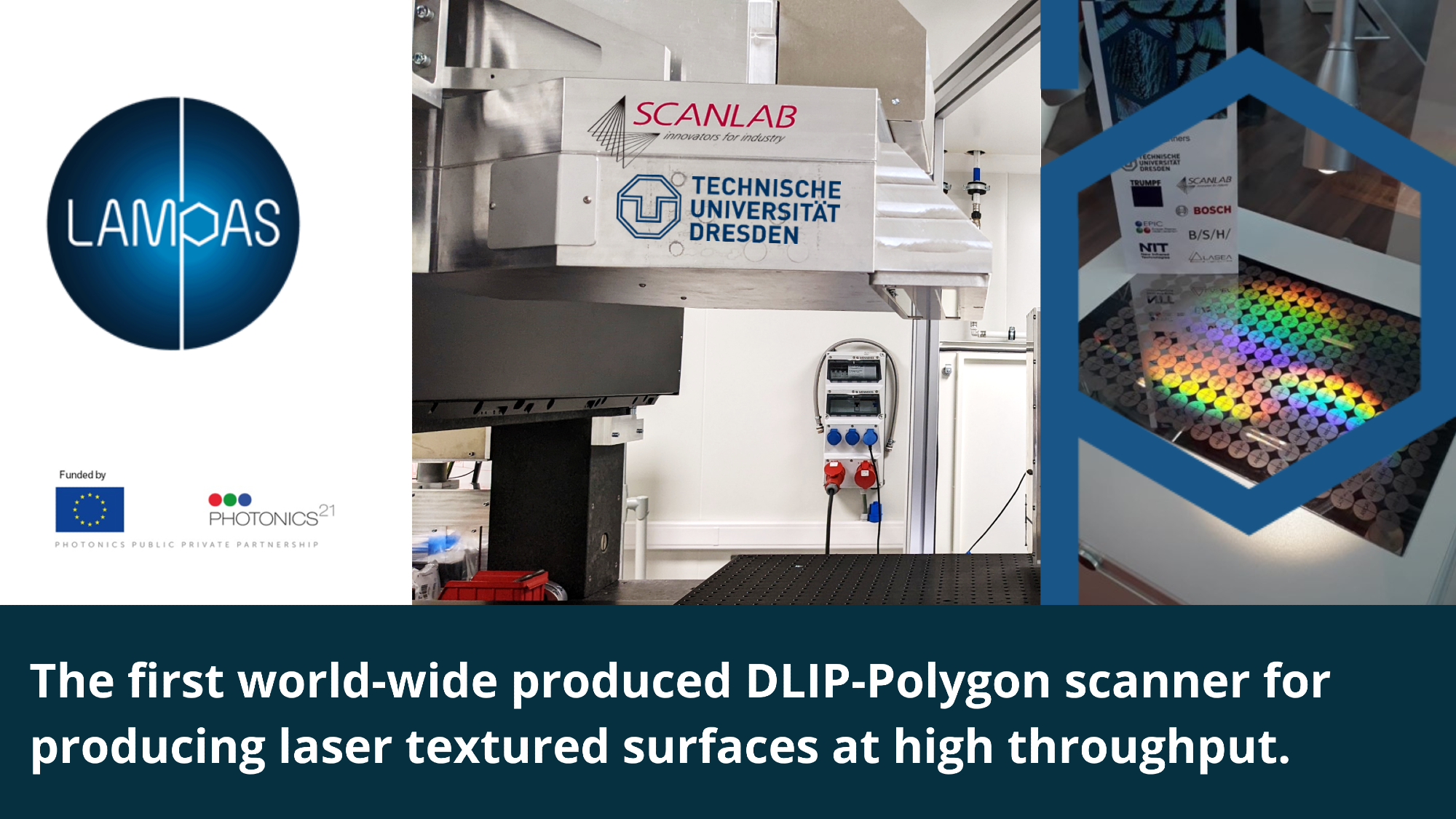In the frame of the EU-funded LAMpAS project, the company ScanLab and the Technische Universität Dresden have developed a high-speed polygon scanner unit, that is able to produce periodic surface structures by utilizing the principle of interference. This device enables to prepare patterns with feature sizes around 3.5 µm, which is about eight times smaller than using conventional polygon scanners operating with wavelengths in the infrared.
 LAMPAS high throughput DLIP – Polygon system and produced decorative elements (LAMpAS logo) on stainless steel. Image Credit: LAMpAS
LAMPAS high throughput DLIP – Polygon system and produced decorative elements (LAMpAS logo) on stainless steel. Image Credit: LAMpAS
The polygon scanner system implements the Direct Laser Interference Patterning (DLIP) technology, which by the combination of several laser beams allows to manipulate and control the intensity distribution of the laser energy which resolution up to the sub-micrometer range. In particular, combining two laser beams produced a line-like intensity distribution, where the lateral distance between the lines can be controlled by the intercepting angles between the beams.
“For producing patterns with short spatial distances, large intercepting angles are needed. These are impossible to reach using conventional polygon scanners. Furthermore, longer laser wavelengths require even larger angles compared to UV radiation. Therefore, we needed to develop a very special optical arrangement in order to obtain the needed angles,” says Ronny De Loor from Scanlab.
“These small features are necessary since the functionalities of materials that we would like to improve can be enhanced in particular by reducing their size. This is in general what natural examples do,” added Prof. Andrés Lasagni from the TU Dresden and coordinator of LAMpAS project.
Since high throughput manufacturing also requires of high laser power, a unique special laser device has been also developed in LAMpAS project and is being combined now with the DLIP-Polygon head. “It has been a challenging task to design an optical configuration capable to receive over 1 kW of optical power provided by pulsed laser source with pulse durations in the picosecond regime. This has not been done so far,” explains Dr. Robert Baumann, also from the TU Dresden.
It is remarkable fact also that the final system, which is being mounted in Belgium by LASEA, also includes two monitoring systems with independent techniques that are capable to assure the stability of the structuring process as well as the quality of the obtained surface properties. Thus, this innovative strategy aims to early detection of instabilities and malfunctions.